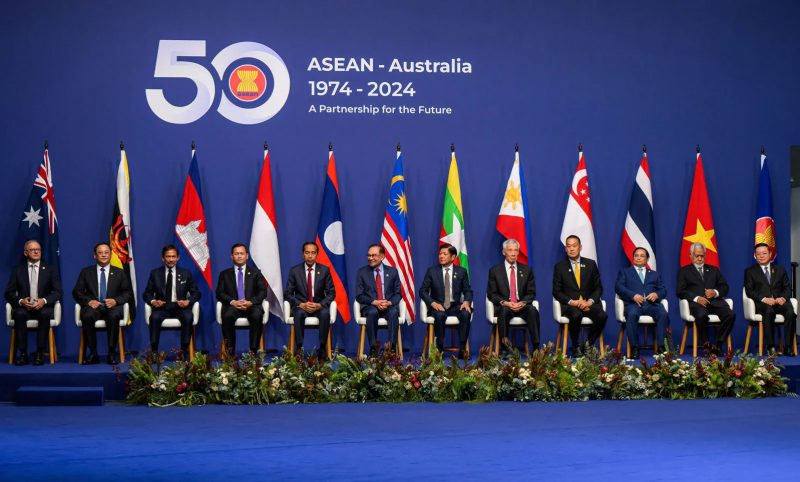ASEAN countries are now attracting more foreign investments than China and are undergoing a new groundbreaking development.
Per a new report released by the SCMP, six ASEAN nations are set to report 97% growth as foreign exploration intensifies. How does this development impact the US dollar?
Let’s find out.
Also Read: Dogecoin (DOGE) & Ethereum (ETH) Price Prediction August 2024
ASEAN Nations Overtakes China In Foreign Investments


The report “Navigating High Winds South East Asia Outlook 2023-2024” highlights ASEAN nations’ increasing global dominance. Key points include:
- ASEAN overtook China in 2023 for the first time in 10 years
- Six ASEAN nations are embracing growth through increased foreign investments
- ASEAN is focusing on four main economic areas: workforce development, labor productivity, capital spending, and capital production
“Based on our analysis, Southeast Asia should, in this next decade, outpace China in GDP growth. Reversing the trend of the last 30 years.”
Factors attracting foreign attention to ASEAN include RCEP, other trade liberalization mechanisms, and the “China+1” initiative as businesses look to diversify away from China.
“Provisions in the RCEP regarding foreign investment and intellectual property rights could draw multinational corporations into Southeast Asia …The agreement also increases the region’s collective bargaining power. Versus competing against China individually.”
Six nations predicted to generate 97% growth:
- Indonesia
- Thailand
- Vietnam
- Singapore
- Malaysia
- The Philippines
The RCEP agreement is expected to attract multinational corporations and increase the region’s collective bargaining power in the global market.
Also Read: ASEAN GCC Alliance: A Game Changer for the US Dollar?
Does This Pose a Threat To The US Dollar?
The report further outlined three reasons why ASEAN may continue to attract global attention.
First, with businesses wanting to move away from China due to anomalies encountered during COVID-19, ASEAN may receive better work output.
Second, ASEAN boasts friendly inter-region competence, which makes trading ethical and easy to establish. Lastly, ASEAN nations boast stellar tourism opportunities, which can attract lucrative opportunities for businesses to benefit from.
“We expect Southeast Asia to grow GDP by 5.1%, on average, in the next decade,” it said. “Vietnam and the Philippines are expected to be the fastest-growing countries, with Vietnam continuing to stay ahead.”
With foreign investments pivoting towards the Association of Southeast Asian Nations, the ten-block nation may counter USD with the theme of multipolar currency. The ASEAN nations and BRICS are working towards establishing their currency system to rival the US dollar. Both entities are currently vying for a local currency narrative, stressing the US Dollar.
Also Read: XRP Not Meant For Retail, Says Ripple’s Ex-Global Head Dilip Rao
Similarly, the Association of Southeast Asian Nations’ growing commitment to the Gulf Cooperation Council also fuels this US dollar speculation. The development above may put the dollar in significant jeopardy.
As the Association of Southeast Asian Nations nations overtake China in attracting foreign investments and focus on key economic growth areas, they are poised to reshape global economic dynamics and potentially challenge the dominance of the US dollar.





